UPSC Daily Current Affairs- 10th July 2023 | Current Affairs & Hindu Analysis: Daily, Weekly & Monthly PDF Download
GS-I
Nari Adalat: Women-only Courts
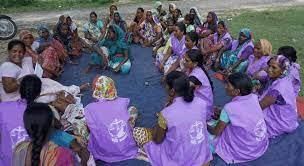
Why in News?
The government is launching a unique initiative ‘Nari Adalat’ to establish women-only courts at the village level.
Nari Adalat
- Nari Adalat aims to provide an alternative dispute resolution forum for issues such as domestic violence, property rights, and countering patriarchal norms.
- The pilot project will commence in 50 villages each in Assam and Jammu and Kashmir, with plans for nationwide implementation over the next six months.
Structure and Functioning
- Composition: Each Nari Adalat will consist of 7-9 members, with half elected members of the gram panchayat and the other half being women with social standing, such as teachers, doctors, and social workers.
- Objectives: It will address individual cases, promote awareness about social schemes, collect feedback, raise awareness about legal rights, and resolve cases falling within its jurisdiction.
- Services Provided: The platform will offer alternate dispute resolution, grievance redressal, counseling, evidence-based decision making, pressure group tactics, negotiation, mediation, and reconciliation for accessible and affordable justice.
Implementation and Collaboration
- Ministry-In-Charge: The Ministry of Women and Child Development will oversee the implementation of the scheme under the Sambal sub-scheme of Mission Shakti, dedicated to women’s safety, security, and empowerment.
- Collaborative Efforts: The Ministry of Panchayati Raj, the Ministry of Rural Development, and the Ministry of Electronics and Information Technology’s Common Service Centers will collaborate in the implementation process.
- Standard Operating Procedures: Detailed procedures for all states have been prepared and will be released to ensure uniformity and effective functioning of Nari Adalats.
Inception of the idea
- Previous Initiatives: The scheme draws inspiration from the Parivarik Mahila Lok Adalats (People’s Court of Women) previously operated by the National Commission for Women (NCW).
- Focus Areas: These courts addressed matters related to family affairs, matrimonial disputes, bigamy, succession, and motor vehicle accident disputes related to labor.
- Discontinued Scheme: The NCW-assisted Parivarik Mahila Lok Adalats conducted a total of 298 sessions before the scheme was discontinued in 2014-15.
Need for such scheme
- Persisting Gender Bias: Women’s only courts counter gender bias in traditional court systems, providing a fair and non-discriminatory environment for women’s cases.
- Cultural and Social Barriers: These courts break down cultural and social barriers that prevent women from seeking justice, offering a culturally sensitive space where they can freely participate.
- Empowerment and Agency: Women’s only courts empower women to assert their rights, challenge patriarchal norms, and access justice independently.
- Addressing Specific Issues: These courts focus on women’s unique issues, including domestic violence, property rights, and gender-based discrimination.
- Enhanced Access to Justice: By being located at the village level, women’s only courts improve access to justice for women who face geographical and logistical challenges in reaching mainstream courts.
- Alternative Dispute Resolution: These courts offer mediation and negotiation options, which are more effective and less adversarial for resolving disputes, particularly in family and community conflicts.
- Precedents and Awareness: Women’s only courts set legal precedents and raise awareness about women’s rights, influencing social norms and promoting positive change.
Conclusion
- The establishment of women-only courts at the village level through the Nari Adalat initiative demonstrates the government’s commitment to empowering women and promoting gender justice.
Source: Hindustan Times
Dadabhai Naoroji (1825-1917)

Why in News?
- Dadabhai Naoroji, the first Indian member of the British Parliament, played a significant role in India’s anti-colonial struggle.
- His scholarly work exposed the economic exploitation of India under British rule, emphasizing the drain theory.
Who was Dadabhai Naoroji?
- Early Life: Naoroji was born in Navsari, Gujarat, into a Parsi Zoroastrian family. He received his education at the Elphinstone Institute School.
- Social Reforms: He founded the Rahnumai Mazdayasan Sabha and the Rast Goftar newspaper to promote Parsi social reforms and clarify Zoroastrian concepts.
- Political Activism: Naoroji co-founded the London Indian Society and the East India Association, advocating for Indian political rights and countering negative stereotypes.
- Indian National Congress: He played a crucial role in the Indian National Congress and served as its President on three occasions.
- British Parliament: Naoroji became the first Indian MP in the British House of Commons, representing Finsbury Central from 1892 to 1895.
- Economic Critique: His book “Poverty and Un-British Rule in India” exposed the drain of wealth from India to Britain and its impact on India’s development.
His proposition of Drain Theory and Poverty
- Naoroji’s Drain Theory: He identified six factors contributing to the wealth drain, including foreign governance, lack of immigration, and unequal employment opportunities.
- Impact of Drain: Naoroji estimated a drain of 200-300 million pounds from India to Britain, which hindered India’s economic progress.
- Railways and Tribute: Naoroji argued that India paid for services like railways, but the profits were drained out of the country, leading to economic imbalances.
- Exploitative Trade: British workers in India were encouraged to repatriate their earnings, and Indian goods were undervalued, allowing for economic exploitation.
Major works
- Started the Rast Goftar Anglo-Gujarati Newspaper in 1854.
- The manners and customs of the Parsees (Bombay, 1864)
- The European and Asiatic races (London, 1866)
- Admission of educated natives into the Indian Civil Service (London, 1868)
- The wants and means of India (London, 1876)
- Condition of India (Madras, 1882)
Legacy and Views
- Naoroji’s Significance: He is considered a crucial figure in India’s independence movement, advocating for responsible government and Indian autonomy.
- Influence on Gandhi: Mahatma Gandhi was influenced by Naoroji’s writings and recognized him as a father figure for the Indian people.
- Admirations: Bal Gangadhar Tilak praised Naoroji’s leadership and stated that Indians would unanimously elect him if given the chance.
- Recognition: Naoroji’s contributions are honoured through various roads, streets, and awards named after him.
Source: Times of India
Evidence of High Rainfall during Deccan Traps Volcanism
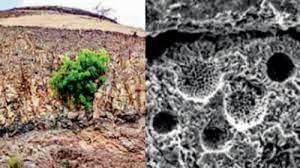
Why in News?
- A team of scientists from IIT Kharagpur has discovered evidence of exceptionally high annual rainfall during the volcanic activity that formed the Deccan Traps in India around 66 million years ago.
- Using a new technique called Nanoscale Secondary Ion Mass Spectrometry (NanoSIMS), the researchers analyzed the isotopic composition of fossil trees from the Cretaceous period.
- They determined the isotopic composition of the rainfall-derived lake water.
Nanoscale Secondary Ion Mass Spectrometry (NanoSIMS)
- NanoSIMS is an advanced analytical technique to determine the composition and distribution of elements and isotopes at a microscopic scale.
- It allows for high-resolution imaging and quantitative analysis of samples.
- The technique involves bombarding the sample surface with a focused beam of primary ions.
- This causes the ejection of secondary ions from the sample surface.
- The secondary ions are collected and analyzed using a mass spectrometer.
- The mass spectrometer separates the ions based on their mass-to-charge ratio and measures their abundance.
Analysis and Findings
- New Technique: The team used Nanoscale Secondary Ion Mass Spectrometry to analyze oxygen isotopes in fossil trees and measure the isotopic composition of the lake water derived from rainfall.
- Depleted Oxygen Isotopes: The analysis revealed depleted oxygen isotope values, indicating higher tropical rainfall in India during the terminal Cretaceous period.
- Link to Paleoclimatic Changes: The increase in rainfall closely corresponded to changes in paleo-atmospheric carbon dioxide levels, suggesting a potential underlying link between the two.
Implications and Comparison
- Atmospheric Carbon Dioxide Concentration: The eruption of Deccan Trap lavas released a significant amount of carbon dioxide, raising atmospheric levels to as high as 1,000 ppm.
- Comparison to Modern Rainfall: The data from fossil trees indicated an annual rainfall of 1,800-1,900 mm, exceeding the average modern rainfall of 1,000-1,200 mm in most parts of peninsular India.
- Climate Change Predictions: The findings align with predictions made by the Intergovernmental Panel on Climate Change (IPCC) for extreme warming scenarios, suggesting a correlation between high carbon dioxide levels and increased rainfall.
Climate Models and Future Projections
- Rising Carbon Dioxide Levels: Fossil fuel emissions have raised carbon dioxide levels from 280 ppm to about 420 ppm in 2023.
- Impact on Rainfall: Climate models indicate that doubling carbon dioxide levels will intensify atmospheric circulation and subsequently increase rainfall.
- IPCC AR6 Report: The report warns of a significant increase in the wettest day precipitation and tropical cyclone-associated rainfall if carbon dioxide emissions continue to rise unabated.
Conclusion
- The study provides evidence of high rainfall during the volcanic activity that formed the Deccan Traps in India millions of years ago.
- The findings suggest a correlation between elevated carbon dioxide levels and increased rainfall, supporting predictions made by climate models for future climate change scenarios.
Source: Times of India
GS-II
Annulment of Member of Parliament
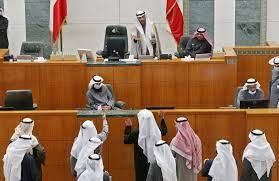
Why in News?
The Madras High Court declared the election of a Member of Parliament (MP) from the Theni Parliamentary constituency in 2019 as null and void.
- The court, however, kept the order in abeyance for a month to enable appeal against the order.
What is the Background?
- Allegations:
- The petitioner alleged that he failed to disclose his true assets and liabilities in Form 26 of his election affidavit, which is filed under Rule 4A of Conduct of Election Rules, 1961.
- Additionally, it was claimed that he resorted to corrupt practices, including the distribution of cash in exchange for votes, violating section 123 of the RP (Representation of the People) Act, 1951.
- Court’s Observation:
- The High Court found that the returning officer responsible for scrutinizing the nominations did not adhere to Section 36 of the RP Act and the instructions outlined in the Handbook.
What is the Conduct of Elections Rules, 1961?
- About:
- The Conduct of Elections Rules, 1961 is a set of rules established under the Representation of the People Act, 1951 in India. These rules govern the conduct of elections in the country and provide guidelines and procedures to be followed by candidates, political parties, election officials, and voters.
- The rules cover various aspects of the electoral process, including the filing of nomination papers, scrutiny of nominations, election campaign regulations, polling procedures, counting of votes, and election dispute resolution.
- Rule 4A:
- Candidates, while submitting their nomination papers to the returning officer, are required to include an affidavit (Form 26) to provide a legal statement regarding the candidate's assets and liabilities.
What are ‘Corrupt Practices’ under the RPA, 1951?
- Section 123 of the Act:
- It defines ‘corrupt practices’ to include bribery, undue influence, false information, and promotion or attempted promotion of “feelings of enmity or hatred between different classes of the citizens of India on grounds of religion, race, caste, community, or language” by a candidate for the furtherance of his prospects in the election.
- Section 123 (2):
- It deals with ‘undue influence’ which it defines as “any direct or indirect interference or attempt to interfere on the part of the candidate or his agent, or of any other person, with the consent of the candidate or his election agent, with the free exercise of any electoral right.”
- This could also include threats of injury, social ostracism and expulsion from any caste or community.
- Section 123 (4):
- It extends the ambit of “corrupt practices” to the intentional publication of false statements which can prejudice the outcome of the candidate’s election.
- Under the provisions of the Act, an elected representative can be disqualified if convicted of certain offences; on grounds of corrupt practices; for failing to declare election expenses; and for interests in government contracts or works.
What are the Other Provisions of Disqualification of MP under RPA, 1951?
- He must not have been convicted for any offence resulting in Imprisonment for two or more years. But the detention of a person under a preventive detention law is not a disqualification.
- He must not have any interest in government contracts, work or services.
- He must not be a director or managing agent nor hold an office of profit in a corporation in which the government has at least 25 % share.
- He must not have been dismissed from government service for corruption or disloyalty to the State.
- He must not have been convicted for promoting enmity between different groups or for the offence of bribery.
- He must not have been punished for preaching and practising social crimes such as untouchability, Dowry and sati.
What are the Judicial Observations related to Corrupt Practices in the Past?
- Abhiram Singh v C.D. Commachen Case (2017):
- The SC held that an election will be annulled if votes are sought in the name of a candidate’s religion, race, caste, community, or language, as per Section 123 (3) of the RPA1951 which prohibits the same.
- SR Bommai v. Union of India (1994):
- The SC ruled that the encroachment of religion into secular activities is strictly prohibited, citing subsection (3) of Section 123 of the RPA, 1951.
- S. Subramaniam Balaji vs State of Tamil Nadu (2022):
- The SC held that promises of freebies cannot be termed a corrupt practice.
- However, the matter is still yet to be decided.
Source: TOI
One District One Product (ODOP) Programme
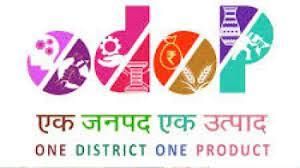
Why in News?
Recently, One District One Product (ODOP) programme under Department for Promotion of Industry and Internal Trade (DPIIT), Ministry of Commerce & Industry collaborated with an e-commerce player, Groyyo to onboard aggregators selling ODOP-identified products on its platform.
About One District One Product (ODOP) programme
- It was launched by the Ministry of Food Processing Industries in 2018.
- Objective: To help districts reach their full potential, foster economic and socio-cultural growth, and create employment opportunities, especially, in rural areas.
- This initiative aims to turn every district in India, into an export hub through promotion of the product in which the district specialises.
- The initiative plans to accomplish this by scaling manufacturing, supporting local businesses, finding potential foreign customers and so on, thus helping to achieve the ‘Atmanirbhar Bharat’ vision.
- The ODOP Initiative has identified a total of 1102 products from 761 districts across the country.
- This initiative is carried out with the ‘Districts as Exports Hub’ initiative by the Directorate General of Foreign Trade (DGFT), Department of Commerce.
What is the process?
- Under the ODOP initiative, all products have been selected by States/UTs by taking into consideration the existing ecosystem on the ground, products identified under Districts as Export Hubs (DEH), and GI-tagged products.
- The finalized list is communicated to the Department for Promotion of Industry and Internal Trade (DPIIT) by the relevant Department of States/UTs.
Source: PIB
New Wheat Variety (PBW RS1)

Why in News?
Recently, the Ludhiana-based institution has developed a new variety of wheat called PBW RS1.
About PBW RS1:
- It contains high amylose starch content.
- Resistant starch (RS) won’t cause an immediate and rapid rise in glucose levels.
- The high amylose and resistant starch, instead, ensure that glucose is released more slowly into the bloodstream.
- Amylose starch content known to reduce risks of type-2 diabetes and cardiovascular diseases.
- Food prepared from its whole grain flour also have lower glycemic index.
What is Type 2 Diabetes?
- It is the condition in which the human body doesn’t use insulin welland can’t keep blood sugar at normal levels.
- It develops over many years and is usually diagnosed in adults (but more and more in children, teens, and young adults).
What is glycemic index?
- It is a rating system for foods containing carbohydrates.
- It shows how quickly each food affects your blood sugar (glucose) level when that food is eaten on its own.
Source: The Indian Express
GS-III
Palamu Tiger Reserve

Why in News?
Four soft-release centres for Cheetals are under construction in Jharkhand’s Palamu Tiger Reserve (PTR) for augmenting the prey base for predators especially tigers.
About Palamu Tiger Reserve:
- It is located in the Chhota Nagpur plateau region of Jharkhand.
- The reserve forms a part of the Betla National Park.
- It is one of the first 9 tiger reserves created in the country at the inception of ‘Project Tiger’.
- It is the first reserve in the world in which a tiger census was carried out as a pugmark count, as early as 1932 under the supervision of J.W. Nicholson
- Three rivers namely North Koyal, Auranga and Burha flow through the valleys.
- The area is draught drone with Burha being the only perennial river.
- The Reserve is very rich in minerals like Bauxite and Coal.
- Vegetation:
- It is primarily dominated by Northern Tropical Dry Deciduous, Sal Forest and its associates.
- Smaller patches of Northern tropical Moist Deciduous forests exist too in the Reserve.
- Flora: Shorea robusta, Acacia catechu, Madhuca indica, Terminalia tomentosa, Butea monosperma, Pterocarpus marsupium, Anogeisus latifolia, Indigofera pulchela etc.
- Fauna: Some keystone and principal species found in the reserve include Tiger, Asiatic Elephant, Leopard, Grey wolf, Wild dog, Gaur, Sloth bear and four horned antelope.
Key facts about Cheetal
- The spotted deer or chital is the most common deer species in Indian forests.
- They live in dense forests, forested valleys and also prefer open grasslands, savannas, and plantations.
- Conservation status
- IUCN: Least concern
Source: TOI
Protection of Plant Varieties and Farmers' Rights Authority
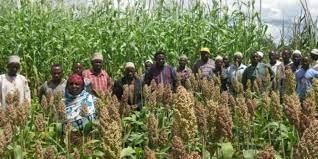
Why in News?
The Delhi High Court recently upheld an order by the Protection of Plant Varieties and Farmers’ Rights Authority (PPVFRA), revoking the intellectual property protection granted to PepsiCo India Holdings Pvt. Ltd with respect to a potato variety developed by it.
About Protection of Plant Varieties and Farmers' Rights Authority:
- It is a Statutory body created by an act of Parliament.
- It works under the Department of Agriculture, Cooperation and Farmers Welfare, Ministry of Agriculture and Farmers Welfare.
- Formation:
- In order to provide for the establishment of an effective system for the protection of plant varieties, the rights of farmers and plant breeders and to encourage the development of new varieties of plants, the of India enacted “The Protection of Plant Varieties and Farmers' Rights (PPV&FR) Act, 2001” adopting sui generis system.
- The legislation recognizes the contributions of both commercial plant breeders and farmers in plant breeding activity and also provides to implement TRIPs in a way that supports the specific socio-economic interests of all the stakeholders including private, public sectors and research institutions, as well as resource-constrained farmers.
- To implement the provisions of the Act, the established the Protection of Plant Varieties and Farmers' Rights Authority on 11 November, 2005.
- Structure:
- The Chairperson is the Chief Executive of the Authority.
- Besides the Chairperson, the Authority has 15 members, as notified by the Government of India (GOI).
- Eight of them are ex-officio members representing various Departments/ Ministries, three from SAUs and the State Governments, one representative each for farmers, tribal organization, seed industry and women organization associated with agricultural activities are nominated by the Central Government.
- The Registrar General is the ex-officio Member Secretary of the Authority.
- General Functions of the Authority:
- Registration of new plant varieties, essentially derived varieties (EDV), extant varieties;
- Developing DUS (Distinctiveness, Uniformity and Stability) test guidelines for new plant species;
- Developing characterization and documentation of varieties registered;
- Compulsory cataloguing facilities for all variety of plants;
- Documentation, indexing and cataloguing of farmers' varieties;
- Recognizing and rewarding farmers, community of farmers, particularly tribal and rural community engaged in conservation and improvement;
- Preservation of plant genetic resources of economic plants and their wild relatives;
- Maintenance of the National Register of Plant Varieties and
- Maintenance of National Gene Bank.
Source: The Hindu
|
38 videos|5269 docs|1114 tests
|
















